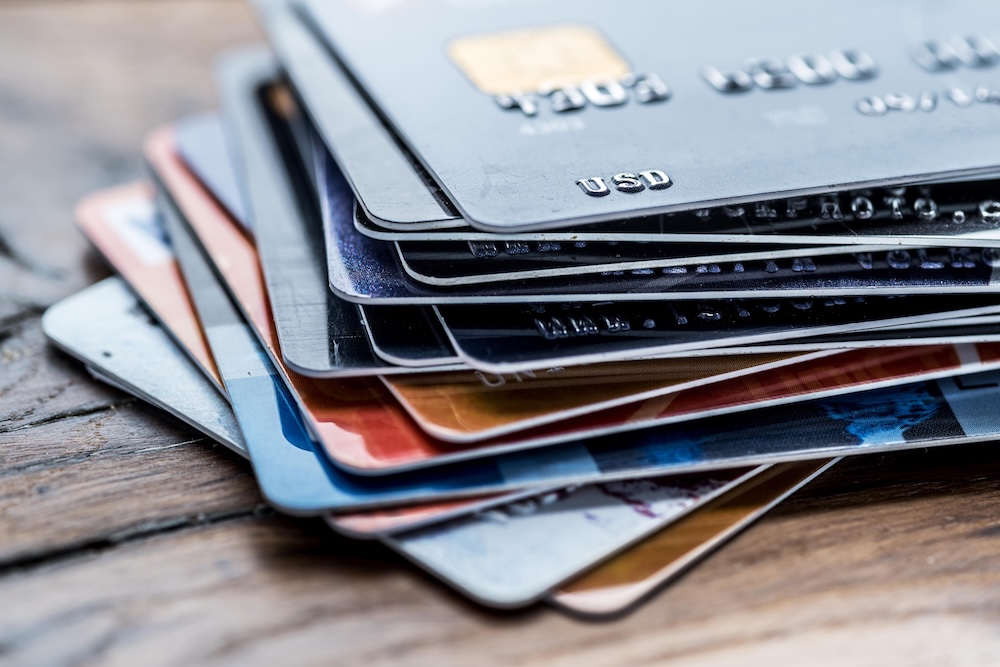That shiny piece of plastic in your wallet? It’s probably more eco-destructive than you think.
No, we’re not talking about the card itself (although yes, it’s likely made of PVC and definitely not compostable). We’re talking about what your credit card represents: a powerful consumer tool that shapes the economy—and the environment—every time you swipe, tap, or autofill.
In this guide, we’re exposing the sneaky ways your credit card contributes to carbon emissions, and showing you how to spend (and earn rewards) like someone who actually gives a damn about the planet.
Let’s swipe into it.
What Is a Credit Card’s Carbon Footprint?
A credit card’s footprint isn’t about its size (unless it’s metal, in which case… bold move). It’s about the chain reaction that starts with every purchase:
- The bank or financial institution behind your card and where it invests your money
- The purchase behavior your card encourages
- The rewards programs that may fuel fast fashion, flights, and impulse buys
- The infrastructure powering billions of daily transactions
Spoiler: even digital payments leave a mark. Let’s break it all down.
1. Banks and Credit Card Issuers Are Financing Fossil Fuels
Most major credit cards are issued by banks that are knee-deep in fossil fuel funding. Think JPMorgan Chase, Citi, Bank of America—all of which have pumped billions into oil, gas, and coal since the Paris Agreement.
Every time you swipe a Chase Sapphire or AmEx, you’re essentially giving interest payments and processing fees to institutions that turn around and fund pipelines.
Try This Instead:
- Switch to climate-conscious banks or credit unions that offer debit or credit alternatives (see: Top 7 Ethical Banks That Don’t Fund Fossil Fuels)
- Explore green credit cards (more on that later)
2. Your Spending Habits Drive Emissions (Literally)
Credit cards make spending effortless—and that’s not always a good thing. The average cardholder charges everything from fast fashion to next-day delivery to six lattes a week without blinking.
But convenience = consumption. And consumption = emissions.
Here’s how credit cards can amplify your carbon footprint:
- Impulse buying: Thanks, Klarna and buy-now-pay-later.
- Unnecessary shipping: Credit rewards incentivize more orders, more packaging, more fuel.
- Upgrades and FOMO: Points often push users toward travel, tech, and luxury goods.
Tip: Audit your last 10 purchases. How many were necessary? How many helped the planet?
3. Rewards Programs Are Basically Climate Kryptonite
Credit card perks are built around incentives that… well, aren’t exactly eco-friendly:
- Flight miles – Air travel is a huge emissions driver.
- Hotel points – Especially in high-impact tourist zones
- Cash back on shopping – Often spent on fast fashion, gadgets, or short-lived stuff
Even when they offer “carbon offsets” or “sustainable purchases,” the baseline assumption is still: spend more to save more.
That’s the opposite of conscious consumption.
Green Rewards > Standard Perks
- Some eco-cards reward spending at farmers markets, transit, bike shops, or for charitable donations
- You can also donate points directly to climate orgs (but read the fine print)
4. The Infrastructure Behind Every Transaction Uses Energy
Each card swipe kicks off a digital relay race:
- The merchant processes the charge
- The network verifies it (Visa, Mastercard, etc.)
- The issuing bank approves it
- Everyone takes a cut
Multiply that by billions of daily transactions, and you get:
- Server farms powering transaction approvals
- Data centers maintaining cardholder accounts
- Encrypted fraud detection running 24/7
While digital payments are cleaner than cash handling and global flights, they still have a carbon cost—especially when supported by banks using dirty energy.
So… Is It Time to Cut Up Your Credit Card?
Not necessarily. But it’s time to choose better:
Step 1: Research Who’s Behind Your Card
Is it a bank that funds fossil fuel projects? Or one that’s transparent about its impact?
Step 2: Shift to a Low-Impact Card
Some climate-conscious cards include:
- FutureCard Visa (rewards for taking the train, eating plant-based, etc.)
- Sunrise Banks’ Build Credit Card
- Green America Credit Union Cards (via TCM Bank)
(Note: always check for hidden fees, greenwashing, and legit reviews before switching.)
Step 3: Use Cards Consciously
- Prioritize purchases that support small, sustainable businesses
- Bundle orders to reduce shipping waste
- Opt out of automatic upgrades, flashy perks, or shopping addiction loops
FAQs About Credit Cards and Carbon Footprints
Q: Is using a credit card worse than paying cash?
A: Not directly. But the institution behind your card and how you use it matter far more than the payment method itself.
Q: What’s the most eco-friendly way to pay?
A: A debit card or credit card linked to a green bank or credit union, used thoughtfully. Bonus points if the card rewards sustainable choices.
Q: Should I avoid all reward programs?
A: Not necessarily. Just choose ones that align with your values—like cashback for eco purchases or charity donations.
Q: Do metal cards have a higher footprint than plastic?
A: Slightly, due to materials and manufacturing, but it’s negligible compared to how the card is used.
Q: Can my points be used for climate-positive actions?
A: Sometimes. Look for programs that allow point donations to vetted environmental nonprofits.
Final Thoughts
Credit cards aren’t evil—but they aren’t neutral either. They’re tools, and like any tool, they reflect the values of the hands that wield them.
So the next time you pull out your wallet, ask yourself: Is this purchase aligned with my values? And is my card backing a future I believe in?
Spend wisely. Swipe with intention. And maybe ditch that airline mile chase while you’re at it.









Reader Interactions